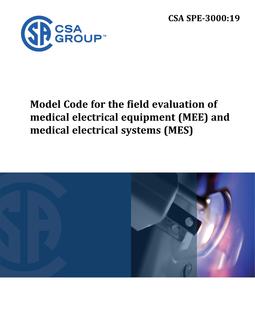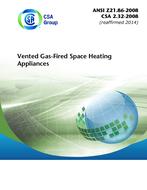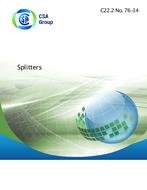Click here to purchase
Preface
This is the second edition of CSA C827, Energy performance of food service refrigerators and freezers. It supersedes the first edition, published in 1998.Scope
1.1
This Standard applies to commercial refrigerator, refrigerator-freezer, and freezer cabinets that are intended for storing or holding food products and other perishable merchandise.
1.2
This Standard specifies methods for measuring the volume and energy consumption of electrically operated commercial refrigerated appliances.
1.3
This Standard applies to
(a) manufacturers’ standard catalogue-type equipment;
(b) closed cabinets of the unitary, self-contained type;
(c) commercial refrigerated storage cabinets, regardless of their shape, size, or configuration (except asnoted in Clause 1.4), including
(i) reach-in cabinets;
(ii) roll-in or roll-through cabinets;
(iii) pass-through cabinets;
(iv) reach-in wine coolers;
(v) fish or poultry files;
(vi) ice cream cabinets;
(vii) milk or beverage cabinets;
(viii) worktop tables; and
(ix) undercounter cabinets;
(d) closed refrigerated cabinets, regardless of the material used for the door(s) of such cabinets, provided that the closed cabinets are designed for holding and storing food products;
(e) both permanently connected and cord-connected equipment;
(f) cabinets equipped with or designed to work with electrically driven, mechanical, vapour compression systems charged with one of the refrigerants listed in CSA B52;
(g) refrigeration equipment designed for storage temperatures either above or below freezing temperatures, or both in separate compartments; and
(h) freezers.
1.4
This Standard does not apply to
(a) open-type refrigeration cases designed for use without doors*;
(b) remote-condensing commercial refrigerators and freezers*;
(c) walk-in refrigerators and freezers, water coolers, refrigerated vending machines, or ice-makingmachines;
(d) soft serve, slush, and shake-dispensing freezers and extruders;
(e) refrigerators, freezers, or combinations thereof designed for residential or consumer household use;
(f) refrigerated cabinets designed to form the front wall of a refrigerated storage room where the air space of the cabinet is not separated from the air space of the storage room;
(g) mitred transitional cabinet fillers used as corner sections between two refrigerated cabinets of identical cross-sections;
(h) refrigeration products for use in recreational vehicles and other mobile equipment;
(i) custom-designed refrigerated storage cabinets manufactured as a special order for one customer only (franchisees are not considered separate customers). Customization in appearance, which does not affect the performance of the cabinet, does not constitute custom design for the purposes of this Standard; and
(j) laboratory-grade refrigerators and freezers, and cabinets with drawers.
*Open and remote-condensing equipment used for displaying and merchandising food products is covered by CAN/CSA-C657.
1.5
In CSA standards, “shall” is used to express a requirement, i.e., a provision that the user is obliged to satisfy in order to comply with the standard; “should” is used to express a recommendation or that which is advised but not required; and “may” is used to express an option or that which is permissible within the limits of the standard.
Notes accompanying clauses do not include requirements or alternative requirements; the purpose of a note accompanying a clause is to separate from the text explanatory or informative material.
Notes to tables and figures are considered part of the table or figure and may be written as requirements.Annexes are designated normative (mandatory) or informative (nonmandatory) to define their application.
1.6
The values given in SI units are the units of record for the purposes of this Standard. The values given in parentheses are for information and comparison only.
Product Details
- Edition:
- 2nd
- Published:
- 07/01/2010
- ISBN(s):
- 9781554914906
- Number of Pages:
- 26
- File Size:
- 1 file , 1.1 MB
- Product Code(s):
- 2420719, 2420796, 2420719


